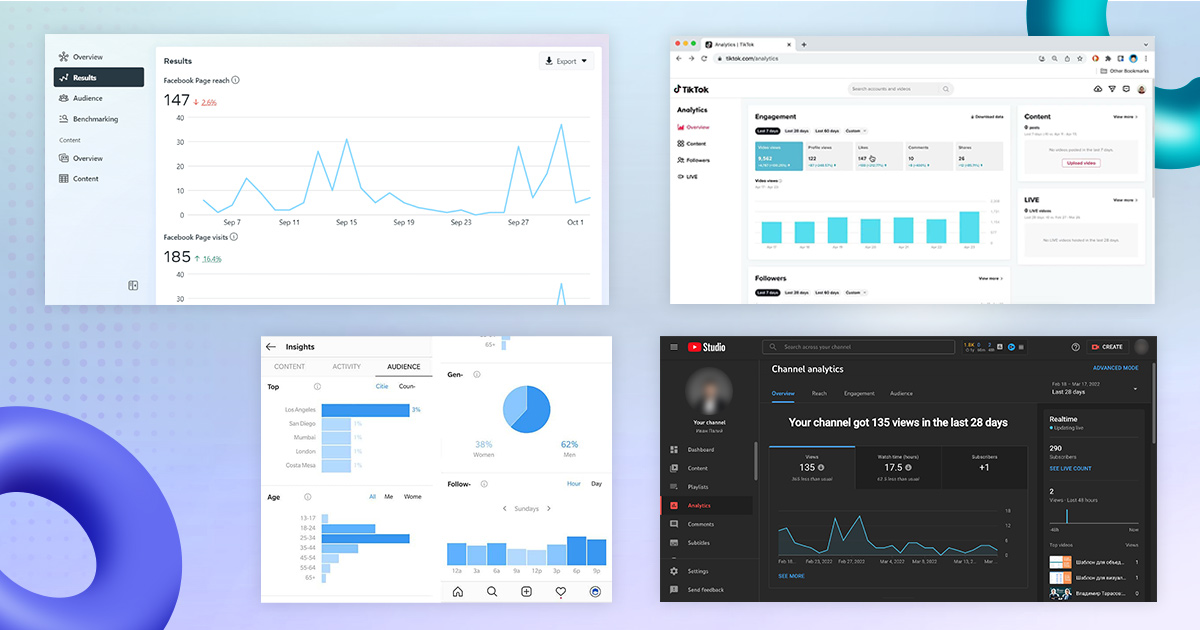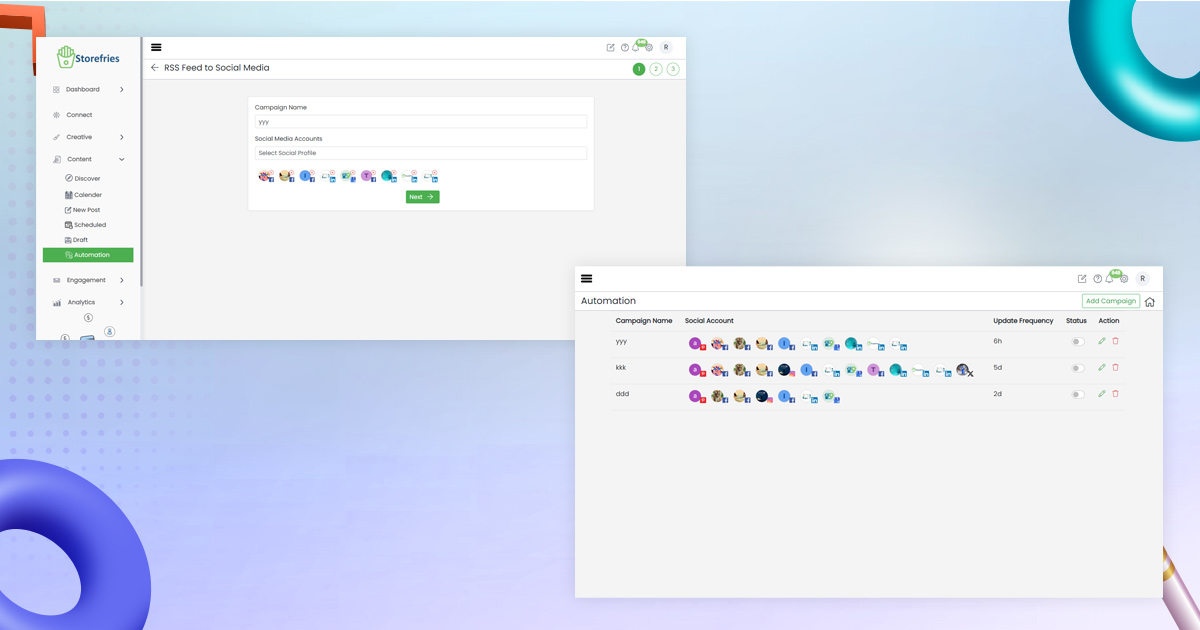Why Social Media Marketing is Important for Business (7 Reasons)
Discover why is social media important for business marketing and using social media for business is no longer optional. It is a important way for expanding our brand, get valuable insights and connecting with customers.
Justin| 8 February 2024

Let’s start with, if you are a business owner looking for a social media presence. it doesn’t matter whether it is a small business or a big national company. Social media is not just a trend it is important for your business marketing strategy, But creating a social media profile is not enough to achieve business growth.
More than three billion people use social media platforms every month and user engagement and the number of users still increasing.

Social media helps you to connect with your target audience, increase brand awareness, and boost your leads and sales.
Social media business is the use of various online platforms and tools for businesses such as marketing, sales, customer service, and brand awareness, is referred to as social media for business.
Social media platforms are used by millions of people worldwide for private purposes but brands can also run social media profiles and make use of them for communication and marketing.
Why is social media good for business?
Social media could be used by big and small businesses to build their brands, promote content, interact with consumers, create leads, do market research, evaluate rivals, understand their audiences, and work with influencers. Taking into account that all social media networks are free to use, there’s a lot of value for your money.
Why is social media important for your business?
The reason why social media marketing is important now more than ever is because social media is where buyers and customers are engaging. Importance of social media in marketing has several advantages to investing in a social media marketing strategies. Here few steps:
- Enhanced Visibility and Brand Awareness
- Direct Engagement with Customers
- Customer Insights and Market Research
- Cost-Effective Marketing
- Driving Website Traffic and Conversions
- Reputation Management
- Keeping Pace with Competitors
Get Attention and Build Awareness

Most businesses provide quality products or services but they don’t get more customers they deserve, why because they don’t have quality products or services? No, because people don’t know about your business, if they don’t about your business they can’t become your customers. Social media boosts your visibility among targeted audiences, letting you attain an extensive audience with a large amount of time and effort. And it’s free to create a business profile on all of the primary social networks so that you don’t have anything to lose.
Here’s a fact: social media content receives attention. However, it’s really easy for a customer to become overwhelmed on Facebook, Twitter, Instagram, and different social media platforms filled with contents from multiple companies looking to promote their brands. How can a company create relevant content in such a crowded space?
The above survey clearly shows that the article has a higher engagement rate than images, videos
This is the crossroads where original content intersects with high-quality design. Between the realm of GIFs, memes, Facebook Live, and beyond, creating a careful social media content strategy is essential. Which message does your audience want to see, how does it align with your brand identity, what drives clicks and comments, and other engagement?
Define your objectives for social media to create a tailored strategy to increase brand awareness. Are you aiming to attract new customers to your services or drive foot traffic to your local store? By maintaining a specific strategy, you can pinpoint the most suitable social media platforms for your business.
Genuine Communication

Customers are very sharp and selective in choosing a business to support, they tend to conduct a brief search before making a decision. During these searches, they’ll check your website and social media presence. Do they find an empty or a wealth of valuable information? Maintaining a strong media presence that is regularly updated with relevant content will increase your brand visibility and ensure a positive initial impression on social media. This shows that your business is trustworthy, knowledgeable, and approachable.
Look for opportunities to showcase your expertise as a thought leader in your industry, such as through written pieces or detailing your company’s mission. By showcasing their offerings and values, they will instill trust in potential customers.
Show Authenticity

Want to attract customers you need to think unique and publish engaging content because customers are not interested in following businesses that publish plain and non-engaging content.
Instead, let your content speak loudly about your brand personality through social media. What is your brand’s voice? How does it mirror your identity? While brands must be courteous and information toward their audiences, it’s even more vital to set up a one-of-a-kind voice and take a stand.
Whatever content you’re going to post it should be true whether it’s casual and formal or funny, because followers want to see the real people behind your profile.
Encourage Engagement

Sometimes a single social media post of your product gets engagement for example promoting a T-shirt can get more likes, comments, and shares. When you look at the post comment section you may notice people ask strangers about the product details, and how long the package takes. Is this product worth it? and other questions.
Social media opens the gate for instant interactions, building relationships, and customer loyalty. Social Media channels are evolving constantly by adding new features, and these constant changes can be challenging for some business owners. But keep in mind: You’re not required to tackle every task. Experiment with fresh methods to engage your audience and allow yourself the freedom to learn along the journey. For instance, consider sharing a series of Instagram Stories one day to provide customers with an office tour behind the scenes. Then, you could host a brief Q&A session via Facebook Live video streaming the next. With time, you’ll gain a clearer understanding of your followers’ preferences.
Engaging video content for social media can be produced with a basic setup including good lighting, a smartphone, and a tripod. Before going live, conduct a test run to ensure your internet connection or hotspot is sufficiently fast to prevent delays and interruptions.
Grow Affordably

Indeed, while it’s not advisable to be excessively sales-oriented on social media, it remains a crucial marketing channel, and one should not overlook potential sales opportunities. Sponsored content in timelines, videos featuring calls-to-action, cross-channel retargeting, and shoppable posts are fundamental components of social media marketing.
Although marketing expenses can accumulate rapidly, making large-scale campaigns impractical for many businesses, social media advertising provides excellent value for your investment. Regardless of your company’s size or budget, utilizing ads on platforms like Facebook and Instagram can expand your audience and help you achieve your objectives. Despite platforms like Instagram primarily focusing on engagement, there are effective strategies to drive sales through them.
While many organizations depend on data-driven decisions, social media advertising lacks the precision of a true science. For instance, you might casually scroll past an ad featuring a tempting scoop of chocolate ice cream topped with whipped cream. Although you may initially pay little attention, you could find yourself craving chocolate ice cream and visiting a nearby shop a few days later. In this way, social media plays a role in influencing customers’ purchasing decisions
When developing a marketing campaign, it’s important to identify your target audience and establish clear objectives to avoid overspending on ineffective ads. Prioritize creating content that educates or entertains rather than being overly promotional to enhance engagement and efficacy.
Provide support
Social media platforms are a bridge between companies and their customers. Nowadays, instead of reaching out to a customer service hotline, People go to Facebook or Twitter to address issues or get information.
Improve your brand’s reputation as a responsive and caring brand by assisting social media channels:
create a system to track your customer feedback, questions, and complaints on social media.
Try to respond to customers’ questions quickly.
Act positivity and helpfulness in interactions.
Be attentive to criticism and make sure customers feel acknowledged.
find out when and how to solve public conversation in DMs.
Selecting social media platforms
There are several social media platforms, and all of them not will be right for your business. Here are some ways to consider when choosing platform for social media in business.
- 1. Define Your Target Audience
- 2.Understand Platform Demographics
- 3. Consider Your Content Type
- 4. Set Clear Goals and Objectives
- 5. Analyze Competitor Presence
13 Statistics That Prove The Importance Of Social Media Marketing
Working on social media platforms allows you to highlight employee stories, your brand’s vision and values, and build emotional connections with audiences. This is important not only for B2C companies but also for B2B companies. Here’s why social media marketing is important:
1. Important to marketers: According to Buffer, 89% of marketers consider social media to be “very important,” while 30% consider it “somewhat important” to their overall marketing strategy.
2. YouTube Engagement: Users watch more than 1 billion hours of YouTube content per day.
3. B2B Networking: 82% of B2B marketers use LinkedIn for networking and business connections with other services like Facebook, Twitter, Instagram, YouTube and Pinterest.
4. Lead Generation: In 2017, LinkedIn was responsible for 80% of B2B social media leads.
5. Global Reach: 53% of the world’s population is active on social media (We Are Social).
6. User Growth: Every second, 13 new users join social media for the first time (Hootsuite).
7. Trust Recommendation: 70% of adults trust online recommendations from friends and family, but only 15% trust official social media posts from companies (PostBeyond).
8. B2B Customers: 91% of B2B customers actively use social media (IDC).
9. Job search: 79% of job seekers use social media to search for job openings, with 86% doing so within the first 10 years of their career (Glassdoor). 10. **Brand interaction on Twitter**: 93% of Twitter users are open to joining brand conversations, especially if they offer support (Twitter).
11. Instagram Engagement: 90% of Instagram users follow a business or brand account (Instagram).
12. LinkedIn Membership: LinkedIn has about 800 members
13. Facebook’s reach: Facebook reaches 59% of the global social media population, making it the only platform used by more than half of the world’s social media users
5 Steps to market your business on social media
Nowadays every business knows how to market its product or service on social media on its own. This is the best opportunity to interact directly with your target audience is invaluable.
Although many businesses create social media profiles easily, they don’t prioritize the importance of social media strategies and success. You need to take some serious thought behind your social media presence and later take it with paid campaigns to start generating leads for your business.
1. Create a strong profile
Before anything else, you must establish a profile that represents your brand professionally and engagingly. It starts with selecting a perfect username/handle. make it short and attractive, maintain consistency, and relate your business name.
Ensure your profile is filled with all essential details to guide potential customers, partners, and employees to your website. Incorporate a summary of your business activities, contact details, links to relevant landing pages, and any additional information that can encourage your followers to take the actions that you’re looking for.
2. Get a content calendar
Maintaining a consistent flow of content across your channels is crucial. Develop a calendar and fill it with a mix of content, including promotions for your company’s events/webinars, major announcements, blog posts, industry insights, and any other content your followers may appreciate.
Best Content Calendar

It’s important to determine the optimal posting frequency for your brand. Some platforms, such as Facebook, may experience a decrease in impressions and engagement with overposting. But, other channels like Twitter may benefit from multiple daily posts. Analyze to identify what works best for you, and analyze your analytics to make sure the best time to post, is when your audience is most active.
3. start engaging on social media
Once you’ve maintained a strong profile with high-quality content, it’s essential to start engaging with your audience. After all, social media is designed for interaction, making this an effective social media strategy.
Ensure you constantly monitor and respond to mentions and comments. These interactions offer direct engagement opportunities with your audience, so it’s vital not to miss out. Additionally, create lists for easy monitoring of posts to engage with, including partners, customers, influencers, relevant reporters, and analysts.
As you start engaging, find your unique style of responding and maintain consistency in that style across both updates and interactions. Consistency plays a key role in maintaining a reputed brand image.
4. Build up you’re following with a paid campaign
Growing your following organically has become more challenging on major social media platforms like Facebook. While consistent posting and audience engagement are effective organic strategies, additionally running some paid follower campaigns is advisable.

A paid follower campaign can significantly increase your follower count, potentially transforming 1,000 followers into 10,000. Considering the investment of time and effort in your ongoing social strategy, allocating a budget to a paid follower campaign can produce significant outcomes.
5. Start bringing in leads
Now that you’ve established a strong profile, with the best content calendar and a sizable, engaged audience, it’s time to leverage social media to boost ROI. Twitter, Facebook, and LinkedIn offer excellent channels for running lead-generation campaigns.
Utilizing each platform’s ads manager tool, you can create campaigns targeted to your specific buyer persona. All you need is compelling imagery, attention-grabbing, informative ad copy, and you’re ready to launch! It’s also advisable to incorporate UTM codes into your links for conversion tracking in Google Analytics or other preferred tools. Alternatively, you can utilize the conversion tracking tools provided by each social platform.
Conclusion:
The importance of social media for business marketing can’t be overstated. It serves as an effective device to capture attention, build recognition, communicate authority, show authenticity, encourage engagement, and in the long run, force consequences. By strategically leveraging social media platforms, groups can expand their reach, connect to their target audience, and boost their ROI. However, achievement on social media calls for careful planning, constant attempts, and a willingness to adapt to the ever-evolving landscape of virtual advertising. By following the steps mentioned in this blog, corporations can efficiently show the strength of social media to market their services or products and get what they expect from marketing.






Very insightful post! I learned a lot and truly appreciate the way you explained everything so clearly. Looking forward to more content like this.